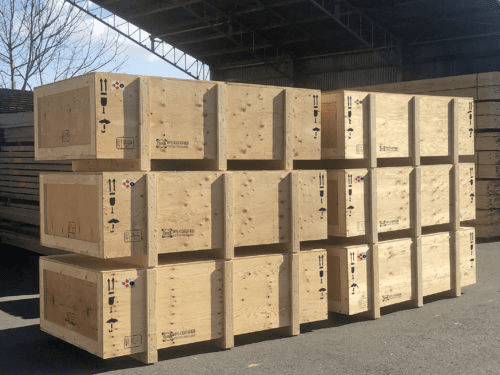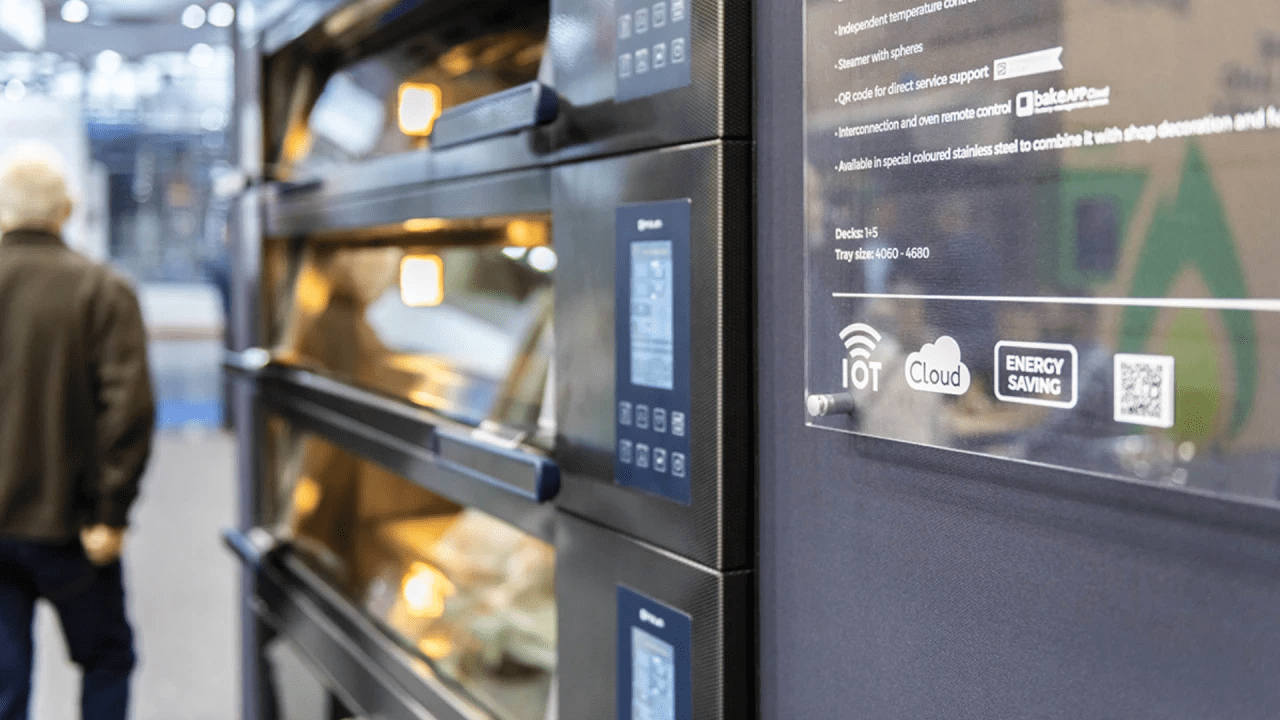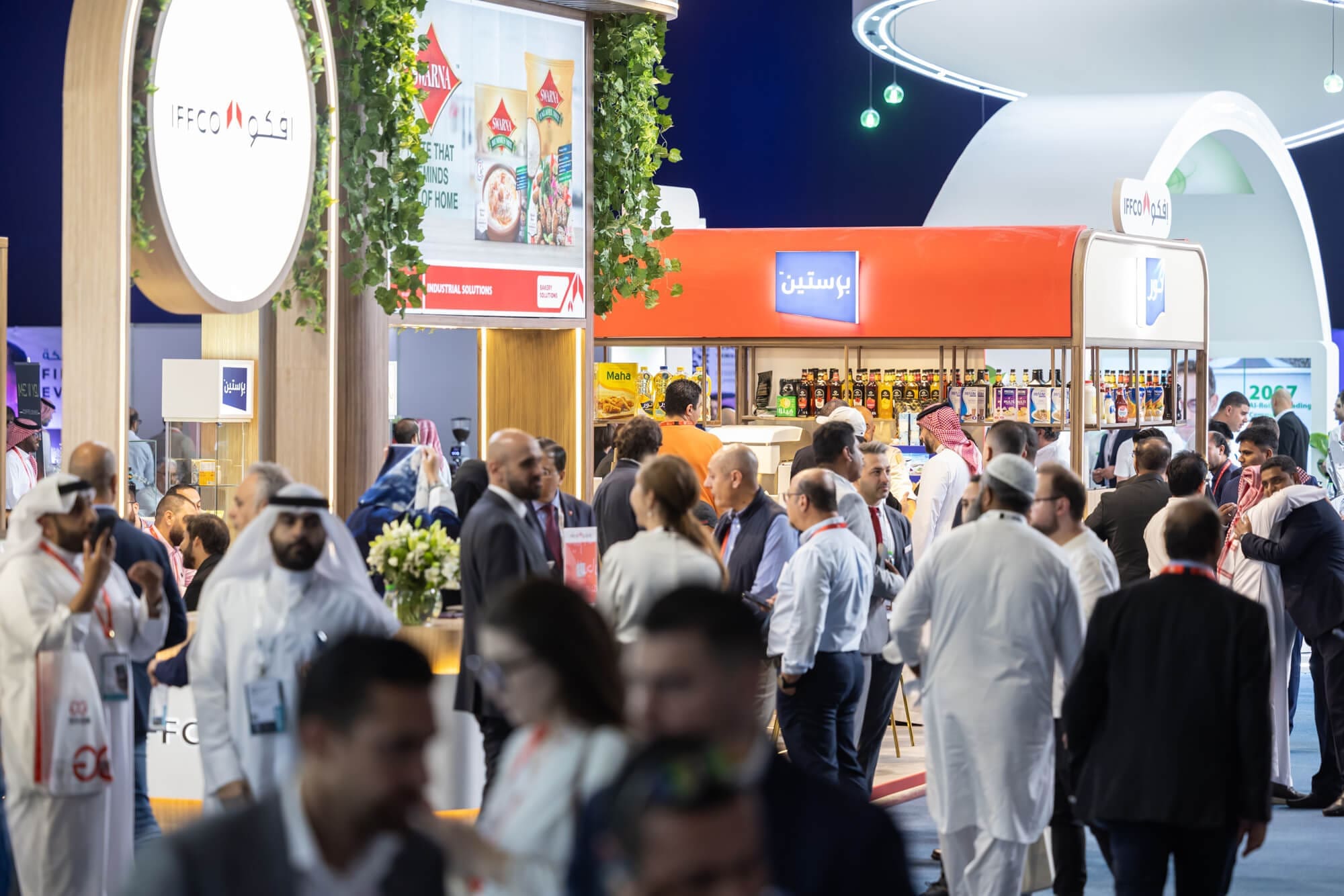A large part of the goods that are produced globally is intended for export. All these goods often need to travel long distances and have to be safely packed for the journey. Therefore, the standards for industrial packaging for land, air and sea travel need to be high. The packaging industry reacts to these requirements with ever new solutions which make transport even safer, more easily traceable and more cost efficient.
The European Union ranks among the top actors in global trade: It is the world’s largest exporter of industrial goods and at the same time represents the largest export market for around 80 countries. The most important trading partner, according to the German Federal Statistical Office, is China: In 2021, goods worth 696 billion euros were traded between China and the EU – 16 percent of the entire EU trade in goods.


About 80 percent of the global transport of goods uses wooden packaging according to the German Association for Wooden Packaging, Pallets and Export Packaging (Bundesverband Holzmittel, Paletten Exportverpackung, HPE). These are stable and weatherproof, which is especially important for transport over sea. Often, container pallets, sliding carriages or boxes are used for this purpose.
“Sliding carriages are often used for transport in a container if additional surrounding protection is not necessary. But in any case, packaging goods must be secured on the sliding carriages, which must in turn be professionally secured inside the container”, explains Marcus Kirschner, Managing Director at HPE.
Packaging goods that are too bulky or too heavy for transport inside a container are packed inside individual boxes, which according to the HPE can on occasion rival the dimensions of a small house. “Our industry uses wooden packaging to move almost anything, from microchips for entertainment electronics to rotor blades for wind turbines.” In order to track temperature, vibrations and humidity during the journey, data loggers inside the boxes are increasingly being used to record all relevant data for later analysis. The current status and location of a box can be determined online in real time thanks to tracking by scanner. And through GPS, these data can also be sent to a smartphone or tablet in real time.
Especially machines and system parts need efficient protection against corrosion during transport over sea. Drying agents or volatile corrosion inhibitor (VCI) molecules are therefore added to prevent corrosion inside the packaging. So-called intelligent corrosion blockers (ICB) are new on the market. Here, a patented active ingredient reacts to the degree of humidity: If the corrosion-inducing degree of humidity rises inside the packaging, the amount of protective agents that is released rises as well. If the impact of the humidity lessens again, so does the release of the anti-corrosive protective agent. The idea is to increase the overall duration of the protection.
Products which are to be transported by air freight may be exposed to weather conditions for some time before loading. For sensitive goods, there are thermal covers which increase the temperature stability for air freight. The newest covers consist of several layers and are partially made of recyclates, for example an insulating layer made of rPET fleece.
Pallets – sustainable, hygienic and stable
For transporting goods on the road, by air or over sea, pallets are one of the most important pieces of loading equipment. The classic wooden Euro-pallet has long since gained plastic rivals, as plastic pallets have many advantages: They do not warp and are long-lived, their exact dimensions and shapes allow for a high level of security during processing and make it possible to adjust them exactly to automated storage and transport technologies. Their low own weight is easy on employees during manual handling and saves costs and CO2 during transport.


The robust surfaces are free of harmful substances, easy to clean and meet high standards of hygiene. Nestable pallets also reduce the required space and the costs of storage. Pallet manufacturer and interpack exhibitor Cabka recently presented a new generation of plastic pallets which are made from recycled plastics, especially for use in the chemical industry. The company mostly uses recyclates for their transport solutions, and these products can again be recycled several times.
Sustainability, in contrast to packaging solutions for the point of sale, has so far been a lesser issue where industrial packaging is concerned. The emphasis is on safe transport. But with the growing debate about the carbon footprint and protecting the climate, the issue is gaining focus. As a lot of packaging material often accumulates for transport, companies can also benefit financially if they consider thinner wraps, or containers that are reusable or made from recyclates. As a sustainable alternative to traditional pallet cages or wooden boxes for transporting goods, Cabka for example has collaborated with Sabic to develop a fully recyclable very large container. The company had been looking for a fully recyclable, lightweight polymer to manufacture their CabCube. The new, recyclable solution is easy to process, resistant to pressure and weighs less than traditional pallets.
Retrieval system for IBCs

In many areas of industry and application, the IBC has become the favoured packaging solution. Intermediate bulk containers are used to transport liquid or granulated chemicals, foods, cosmetics or pharmaceuticals. At Werit, for example, customers can choose between 300, 600, 800 and 1000-litre IBCs on different types of pallets, with or without a valve and with different sizes of lids. A return system makes it possible to take back all used and emptied IBCs, regardless of construction type and manufacturer, free of charge. After reconditioning, cleaning or exchanging different components, the IBC is then reintroduced into the economic cycle.
Especially for hazardous goods, Schütz has developed an IBC with a fireproof outer shell, which offers protection from leakage even under extreme conditions. This container model has a closed, fireproof outer shell made of steel which forms an additional, liquid-proof container that practically serves as an integrated collection tray in case the inner HDPE container is damaged.
If the inner plastic container should melt due to the heat of a fire, the outer steel shell effectively prevents the product from escaping. As a consequence, this IBC model can also be used for sensitive filling goods, which were previously mainly transported in containers with smaller volumes such as steel vats. As the first combination IBC ever, the container was therefore awarded the label “FM Approved” by the industrial property insurance company FM Global.

When it comes to the storage and transport of liquids and granulates, Auer also offers plastic alternatives. The new bag-in-box IBC features exchangeable inliner bags and is therefore not only hygienic and safe, but also reusable. Depending on the type, it can carry 250, 500 or 600 litres and is filled and emptied from above.
Plastic wraps secure loads
Plastic wraps play an important role when it comes to securing industrial goods during transportation, and if they are made from recyclable material or recyclates, they are beneficial to a sustainable circular economy. Closed plastic covers made of shrink or stretch wrap provide a high level of security against theft while reliably protecting goods on pallets against dirt and humidity. The high level of stability of the load means that often additional packaging material, like plastic straps, is unnecessary. This way, what remains at the end is mono-material packaging, which can be easily disposed of and recycled.
Interpack exhibitor MSK also uses technologies that require less resources, for example in their stretch hood systems. These operate with a now greatly reduced energy consumption of less than 0.07 kWh per pallet and can process extremely thin stretch foils down to 20 μm. For the quickly growing application area of automated unwrapping of pallets, MSK has developed a fully automated destrapper to remove straps from pallets of loaded goods. And with the new unwrapping technology by another company, stretch wrap can also be removed from the pallets in a fully automated manner. This work is still mostly done by hand today.
Labels ensure traceability
Especially for hazardous goods, reliable labels are much in demand. With the labels and labelling systems made by Herma, the packaging of chemicals can be traced, to name just one example. They use a QR code which contains all the important product information, and which is applied to the lid of the vat as a label. This way, each individual vat can be identified and located along the supply chains and transport routes. During filling, the code also helps users to ensure that the packaging being used is really suitable for the filled goods.

However, the label with the QR code must also be damage-resistant in the event of hot-filling. Together with Boxlab Services, a start-up founded by BASF, Herma has recently made the acquisition and use of labels for hazardous goods safer, less expensive, quicker and better for the environment. This is because, in spite of their safety-related function, labels for hazardous goods are still a continual source of risk in many companies.
“Labels for hazardous goods have to adhere firmly to very different types of vessels, like barrels, vats, containers, IBC, Big Bags and bottles, but also to pallets wrapped in plastic stretch film – and that means a multitude of different surface materials”, says Sven Pleier, Key Account Manager at Herma. Depending on their intended use, they must be resistant to chemicals like acids, alkalis and solvents, dirt, grease and oil, environmental effects like heat, humidity, cold and UV radiation. The special labels for hazardous goods are delivered on single sheets or on a roll. The siliconised carrier material is taken back and reintroduced into the recycling circuit.
From 4 to 10 May 2023 in Düsseldorf, the exhibitors at interpack present how to pack industrial goods safely and sustainably for transport today. The world’s leading trade fair for processing & packaging offers visitors modern solutions for the area of industrial packaging in Halls 5 and 6 as well as 11 to 14.
Further information on interpack is available at





